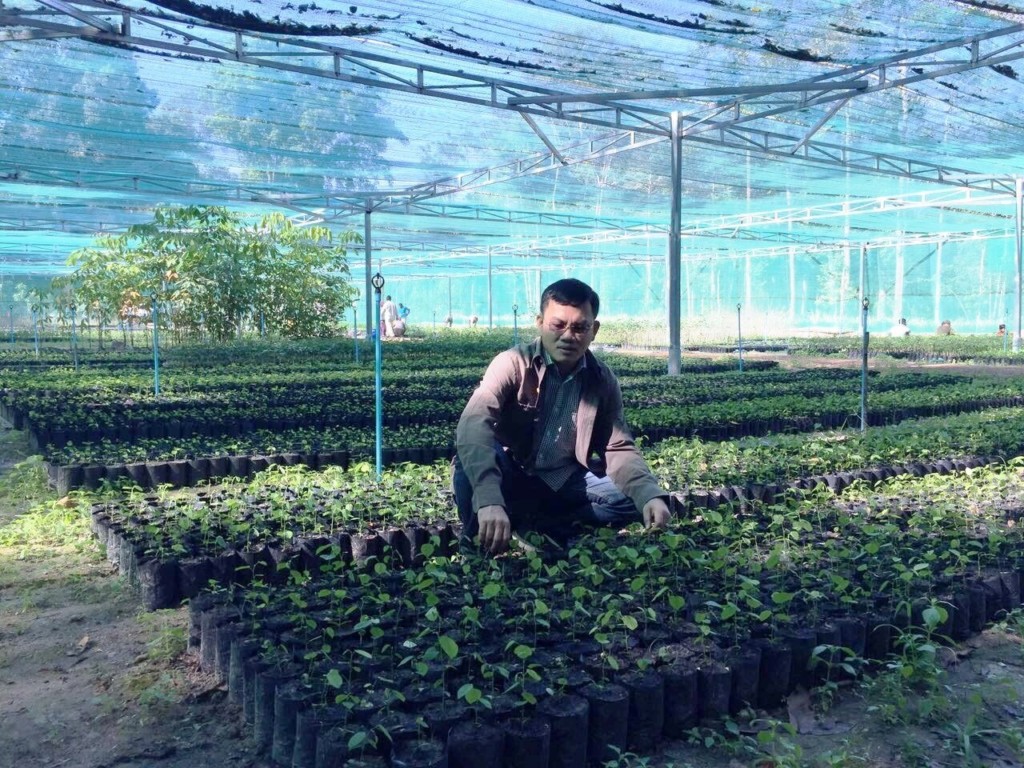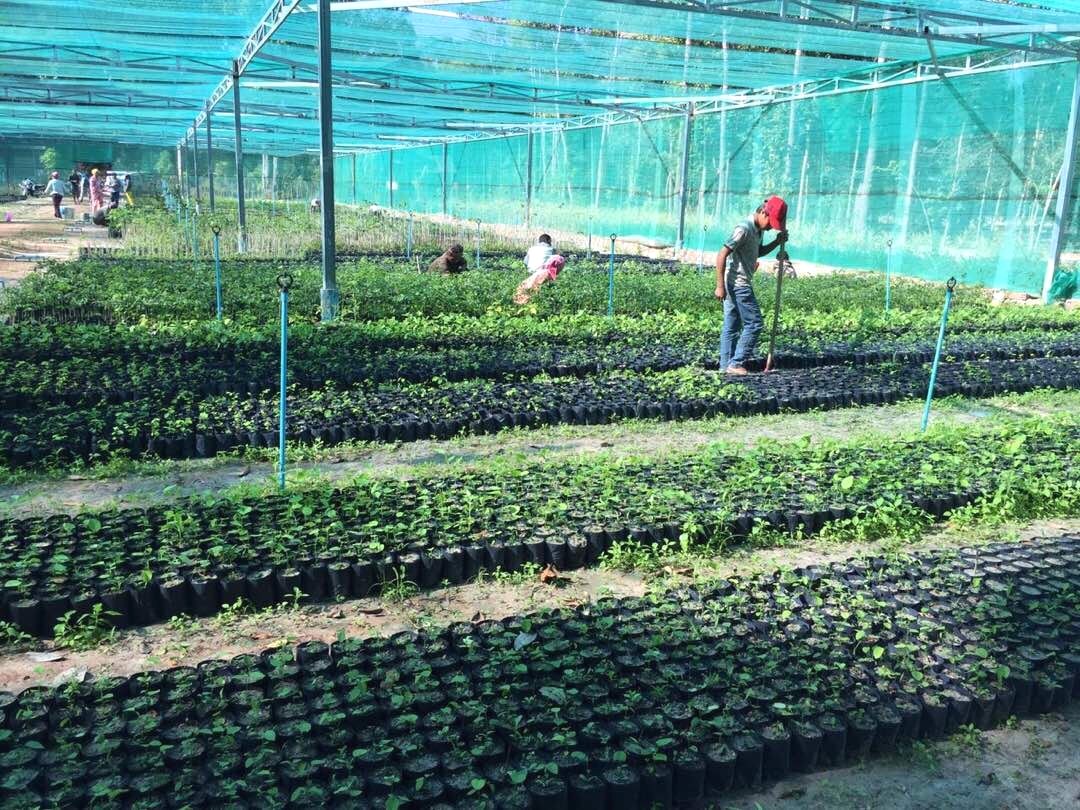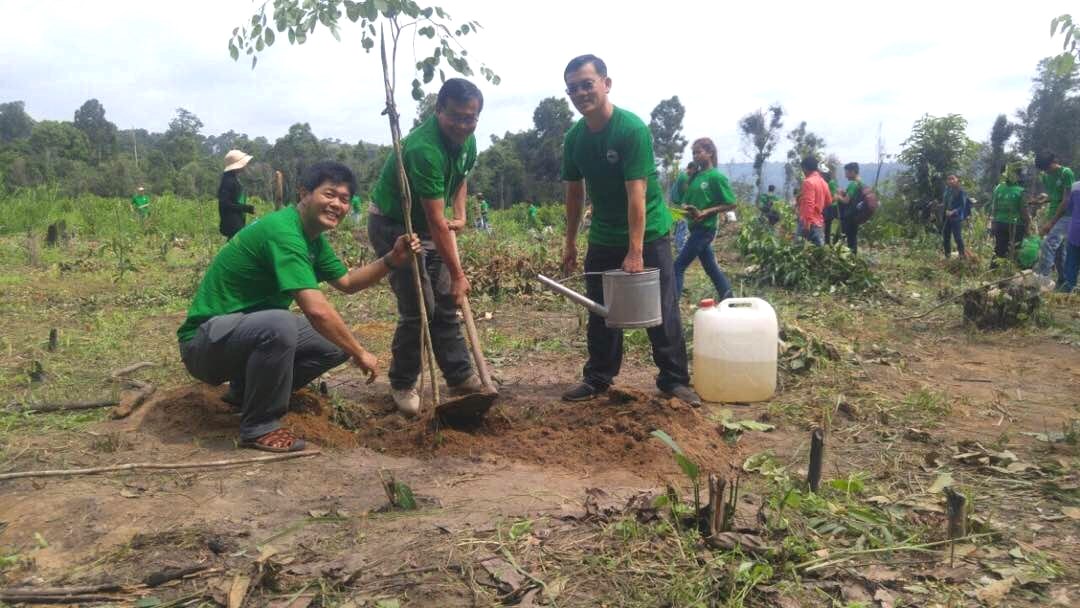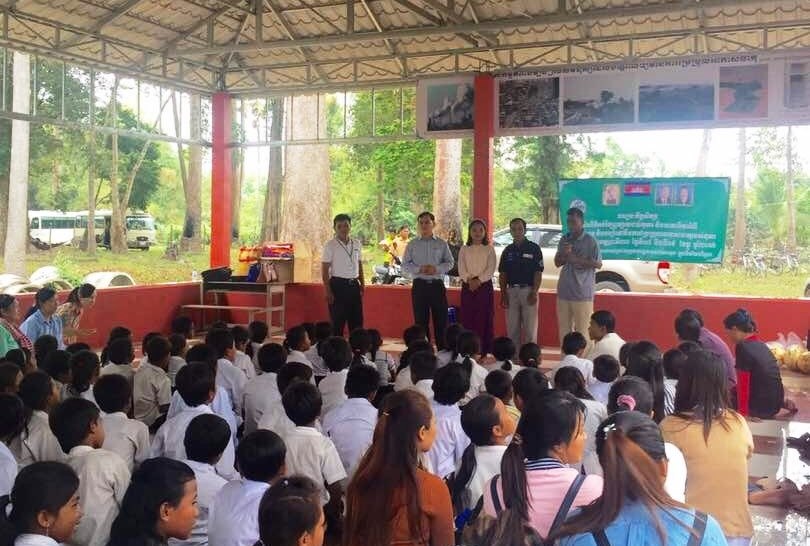Implementing Partners
UN Environment: Rural Communities in Cambodia Find Ways to Overcome Impacts of Climate Change
By UN Environment Communications Team
Fruit trees pepper the homesteads, fish swim among the rice stalks in paddy fields, and stout chickens run around the village of Chiork Boeungprey, located within Boeungper Wildlife Sanctuary in Cambodia.
Villagers here plant rice and cashew trees, raise livestock and carry out odd jobs for a living. They also protect a 2,000 ha patch of forest — one of 27 such Community Protected Areas (CPAs) within the wildlife sanctuary — that provides them with a sustainable supply of resin and other non-timber forest products.
Over the past few years, the villagers began noticing changes in the climate, which have brought more extensive flooding and drought, reducing their crop yields and forcing them to strip their forests to provide things like firewood.
“The seasonal rainfalls have changed and the heat waves are getting hotter,”
said Sieng Houy, a farmer in the village.
In 2013, after a country-wide assessment highlighted the vulnerability of the region to climate change, the UN Environment Programme (a Multilateral Implementing Entity accredited with the Adaptation Fund) started to work with villagers to build their resilience to the changes brought about by global warming.
The project Enhancing Climate Change Resilience of Rural Communities living in Protected Areas in Cambodia, funded by a US$ 4.9 million grant from the Adaptation Fund, intensifies agricultural production well beyond the protected areas, improves food security, increases income, and rehabilitates degraded forest, thus ensuring the sustainable supply of essential ecosystem goods and services.
Work on ecosystem-based adaptation (EbA) to address climate change is a priority at UN Environment, which supports countries at all levels to help them achieve ecologically sound, resilient development.
The project team began with construction of a tree nursery, and since then more than 902,364 trees have been planted throughout the pilot project sites. The nursery’s sunny but sheltered interior is filled with rows of seedlings of indigenous trees meant for forest rehabilitation, and clutches of baby fruit trees destined for homesteads, to bring even greater food security.
Alongside the nursery, villagers gather in the newly built community hall to share new farming practices and share successes and lessons of what has or hasn’t worked in their home gardens.
The village has become a living example of successful community-based adaptation, regularly visited by university students from Phnom Penh.
Both the nursery and community hall are cornerstones of the project, which is carried out by Cambodia’s Ministry of Environment in cooperation with UN Environment. It is funded by the Adaptation Fund, which was established under the Kyoto Protocol of the UN Framework Convention on Climate Change to finance country-led projects that help vulnerable communities in developing countries adapt to climate change.
“The nursery gives this community hope. We used the seedlings to reforest our environment, and the fruit trees and vegetables from my home garden give us food and nutrients daily,”
said 71-year-old Svay Khin, a long-time resident of Chiork Boeungprey, who has seen the onset of climate change reduce his rice yields.
Recently, this particular project has seen more than 500 home gardens established, approximately 5,000 community members trained in a variety of relevant skills and more than 300 households gain improved access to water through extensive development of infrastructure for water resources.
Khin has observed the benefits of the training he has received in the last three years.
“The tube wells the project installed guarantee water supply for our home gardens, family livestock farming and household use, and the chickens we are raising have given my family financial security,”
Khin advised.
The project is one within a diverse portfolio that UN Environment manages, working with governments to shape and implement plans to respond to and buffer against current and future impacts of climate change that are specific to their countries and vulnerable communities. Since major and often-overlooked impacts of climate change are socioeconomic, the project also has a focus on enriching community interaction and collaborative stewardship in the protected areas of the communities.

Project Manager Ouk Navann working the nursery trees. Mr. Navann works for the Ministry of Environment in Cambodia, the executing entity of the Adaptation Fund project.





